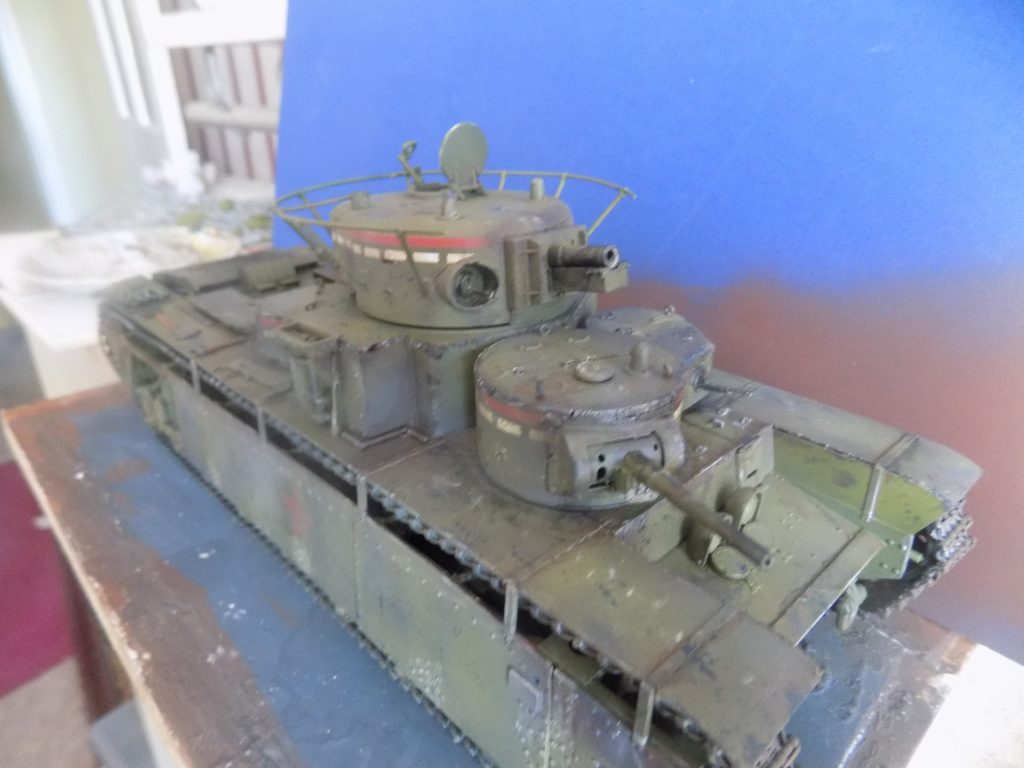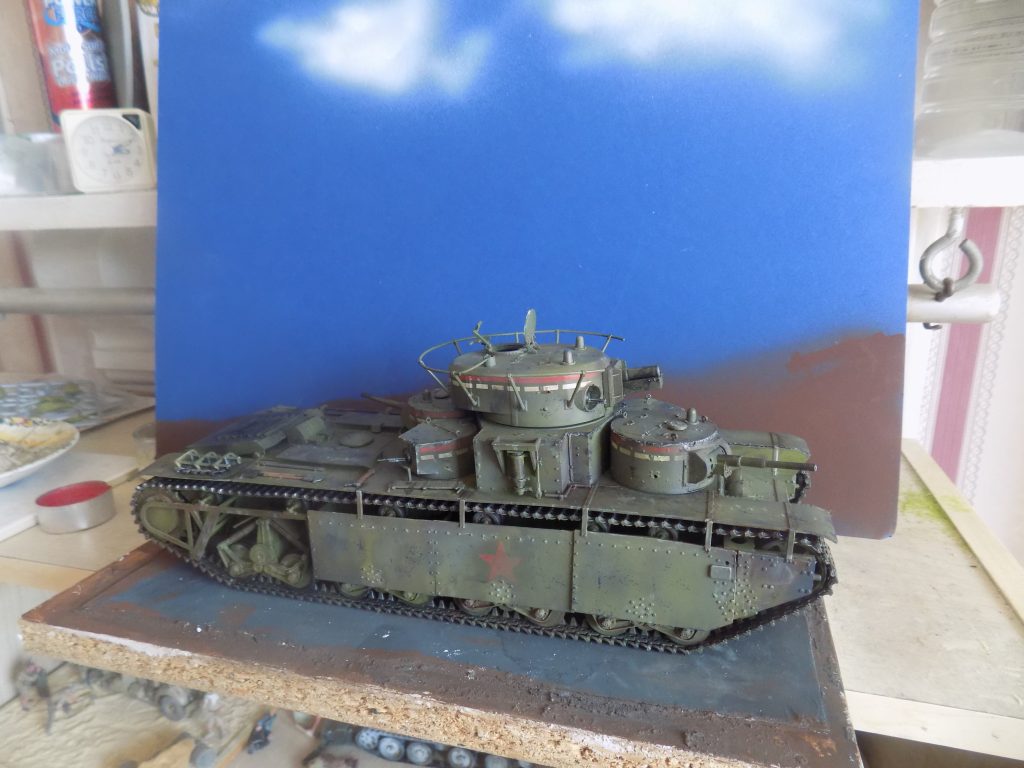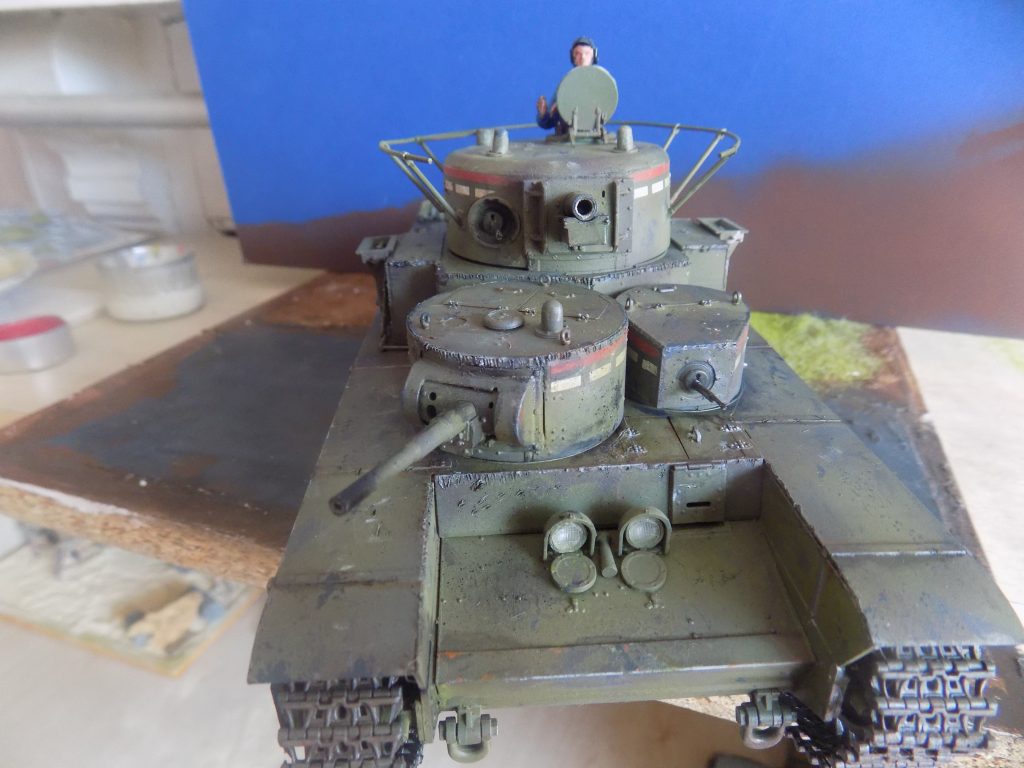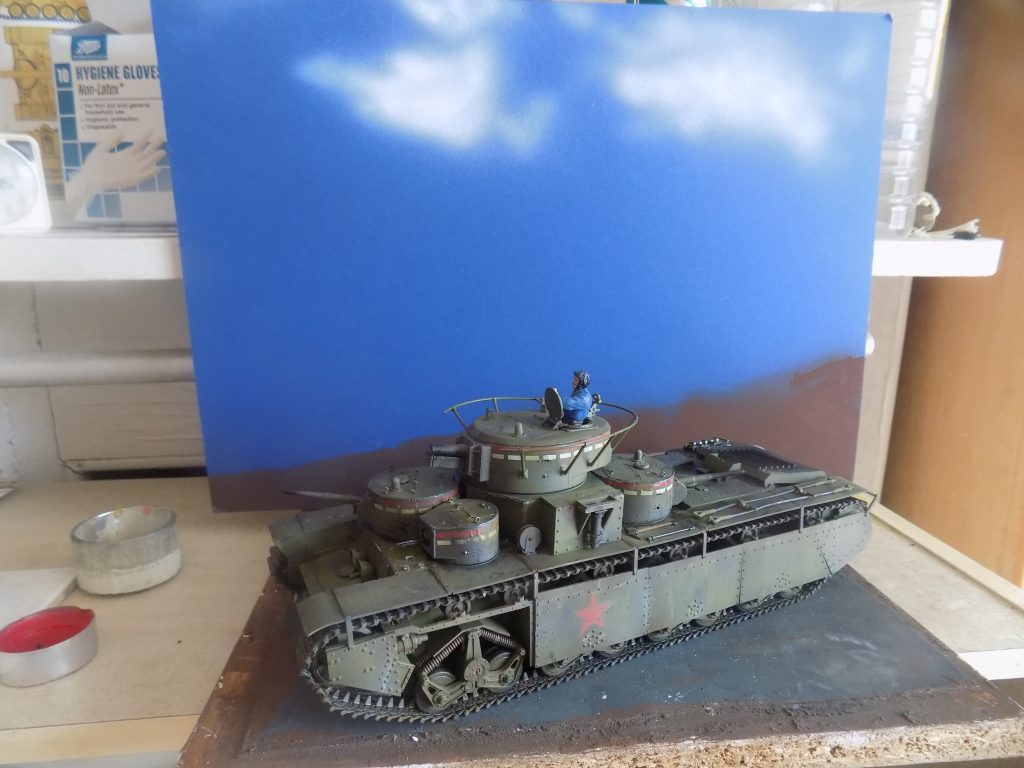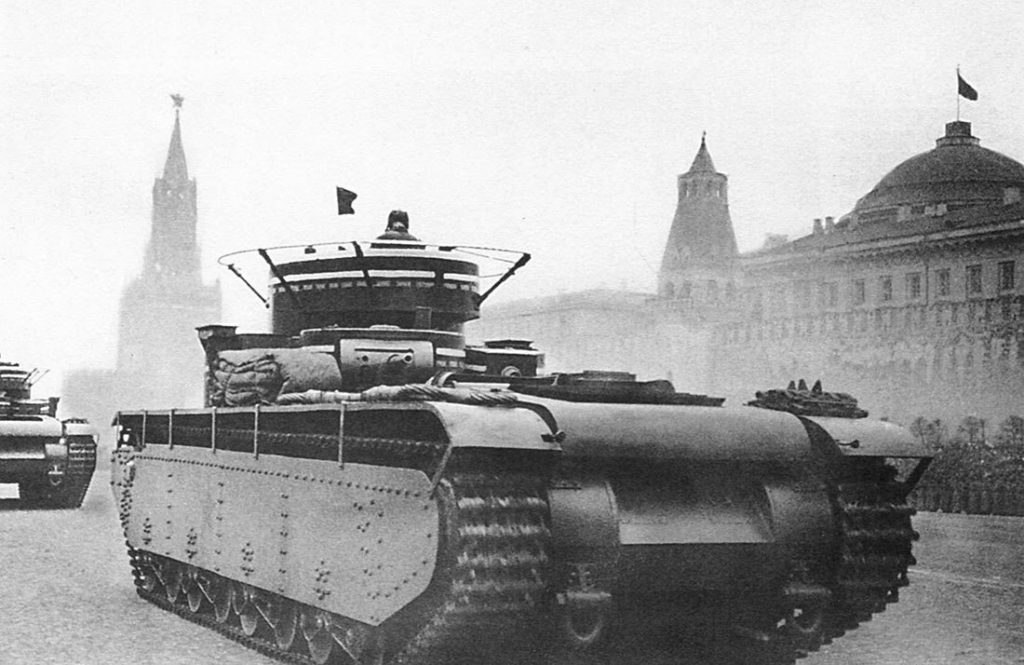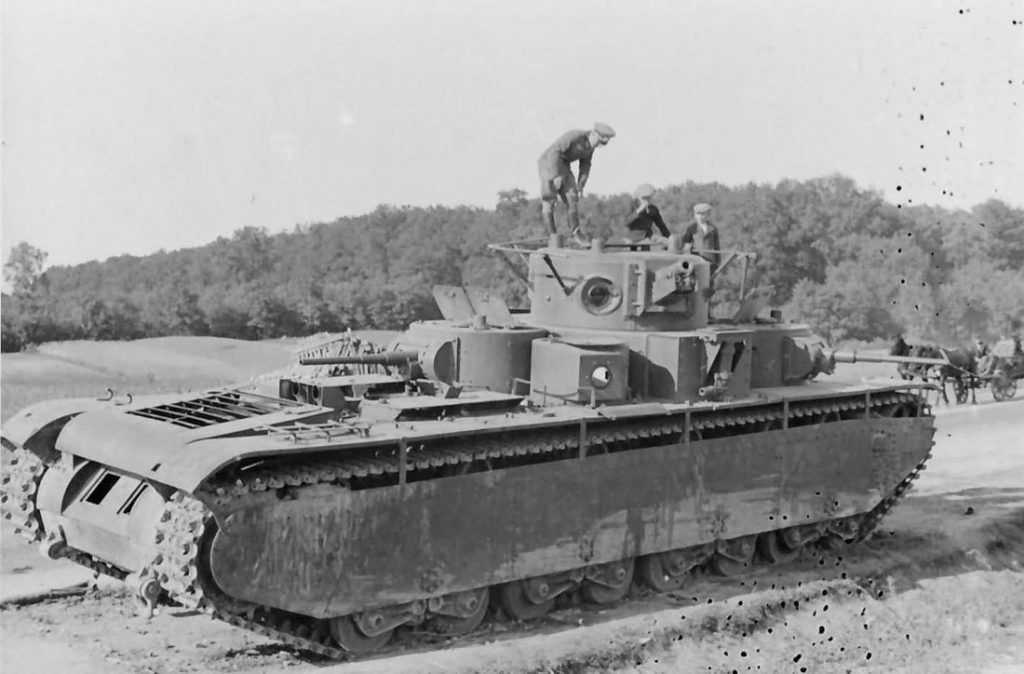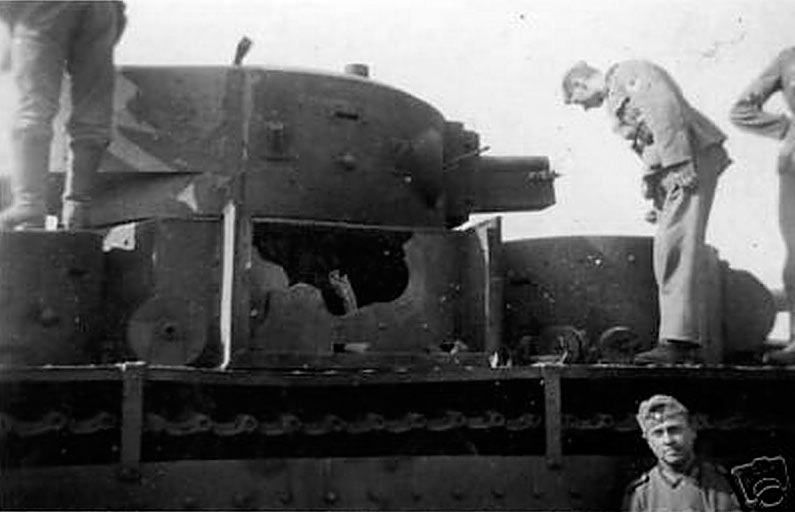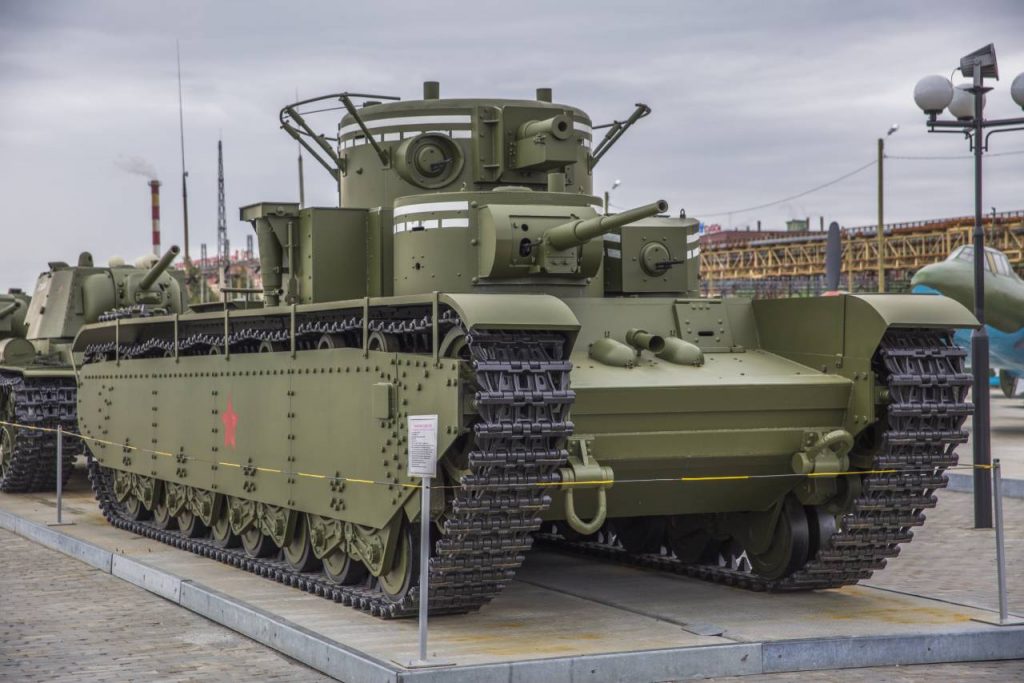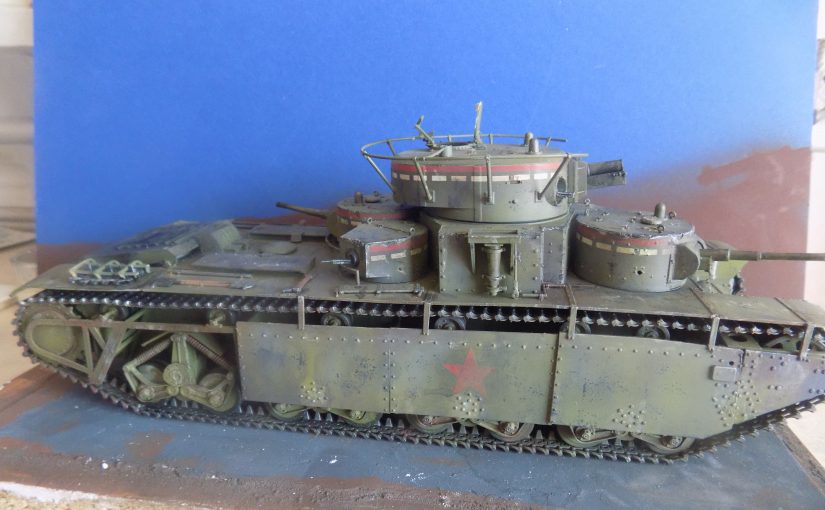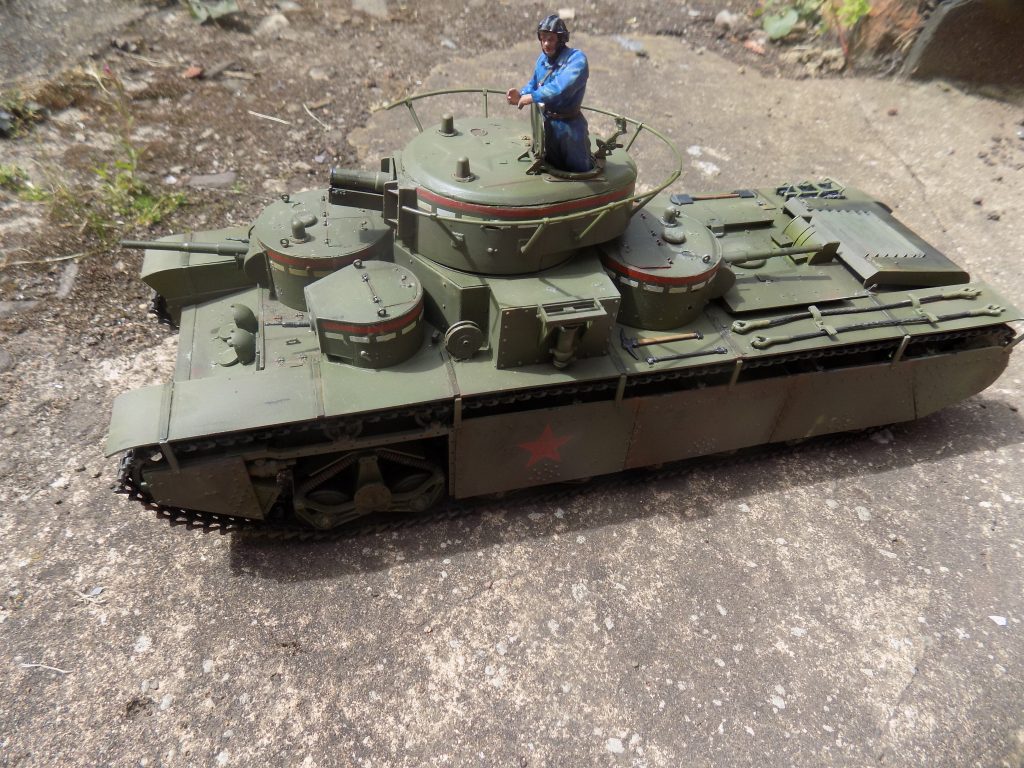
When I first saw the release of this kit by Russian manufacturer Zvezda, I knew straightaway I had to get hold of this Soviet Leviathan! I knew very little about this tank and until the collapse of the Soviet Union detailed information about Soviet arms was difficult to come by. That has all changed now of course and there is a plethora of websites devoted to Russian and Soviet military subjects.
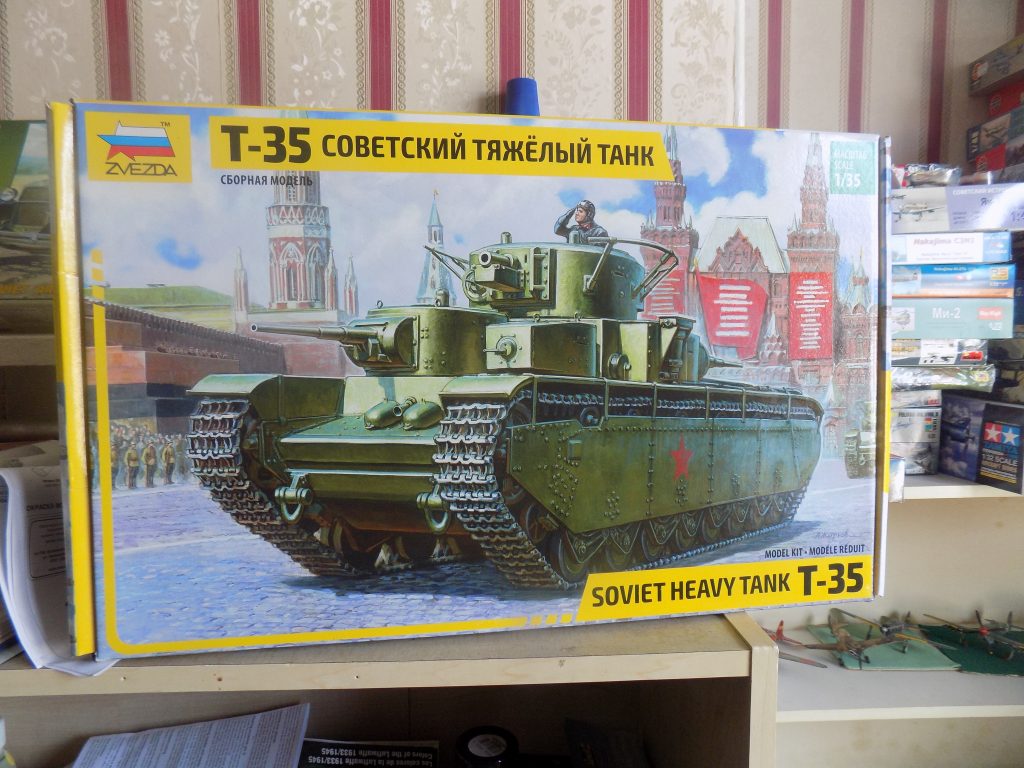
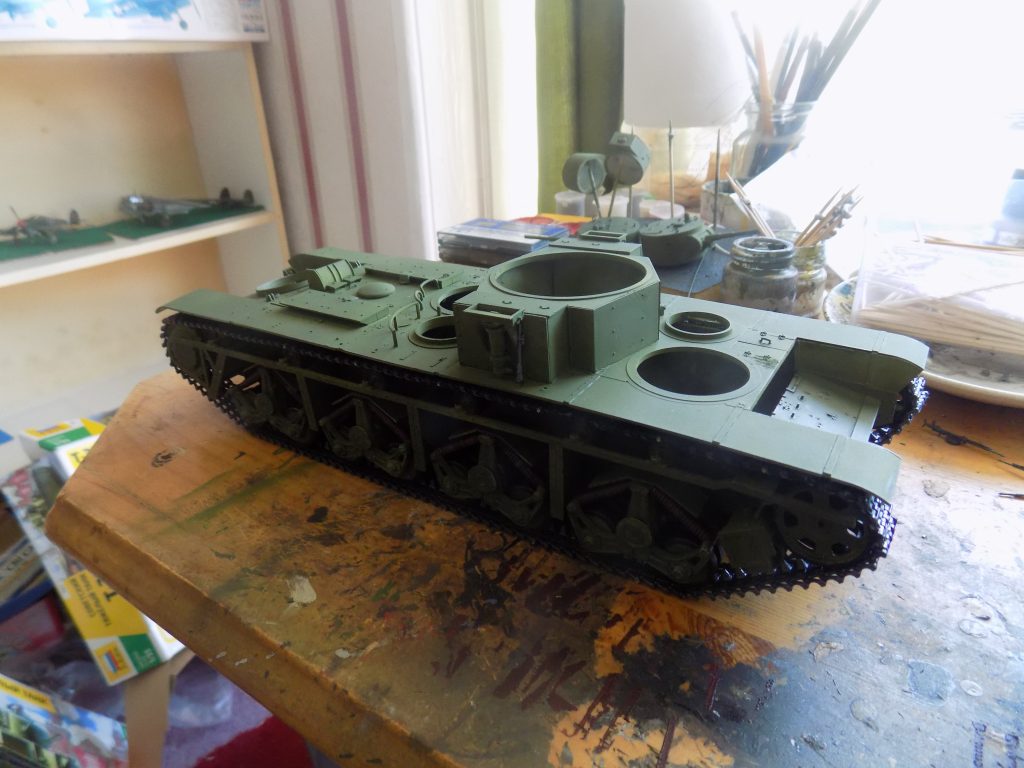
In the first years of the interwar period, the majority of tank powers equipped their armies almost exclusively with light tanks. However a few countries built small numbers, or even single examples, of multi-turreted heavily armoured tanks which were called land battleships or dreadnoughts. Soviet tank builders also became infatuated with these types the representative example of which became the T-35.
The requirement for this weapon originated in 1932. The T-35 was the only five turret tank to go into mass production although in limited numbers. The factory appointed with this task was the Kharkov locomotive works in the name of the Comintern. The cost to the State Treasury of a single T-35 was 525,000 roubles for which money one could build nine BT-5 light tanks!
This heavy assault tank was intended to operate against infantry and anti-tank guns and to help overcome heavily fortified enemy positions. Its powerful armament of three large guns and five machine guns deployed in five turrets enabled the T-35 to bring to bear fire from two guns and three machine guns forward, behind or either side, thereby securing all-round fire.
T-35s took part in battles in Western Ukraine in June and beginning of July 1941 where all were lost. Four T-35s were employed in the defence of Kharkov in October 1941. Some Western and Russian publications suggest the T-35 took part in the Soviet-Finnish war in 1939- 1940 but apparently this is not true.
The combat career of the T-35 was very short. In the summer of 1941, one captured T-35 was repaired by the Germans and sent to Germany. During the loading and transportation of the tank by rail, a number of difficulties arose due to the fact that the T-35 did not fit the gauge (the gauge in Western Europe is less than in the USSR and Russia – 1420 mm versus 1535 mm). However, the tank was delivered to a German tank test site in Kummersdorf, where it was tested. The further fate of this T-35 is unknown.
According to the memoirs of the German driver, “the control of the tank was extremely difficult, and the switching of levers and pedals is very difficult”.
The T-35 had a crew of ten-eleven men(!):
1) commander (senior lieutenant) – in the turret number 1 (main), to the right of the gun, fires and loads the gun with the help of the radio operator, commands the tank.
2) assistant commander (lieutenant) – in turret No. 2 (front cannon), fires from a 45-mm gun, is the deputy commander, is responsible for the state of all the weapons of the tank, when not in action manages the training of artillerymen and machine gunners;
3) junior tank technician (rank 2 military technician) – in the control department, controls the movement of the tank, is responsible for its technical condition, directs the training of driver and motor mechanics outside the battle.
4) mechanic- the driver (sergeant) – in turret number 3 (front machine gun), fires, provides engine care, is the deputy driver of the tank, is responsible for the state of armament turret number 3.
5) artillery turret commander No. 1 (junior platoon commander) – is deployed to the left of the gun, fires, is responsible for the state of armament of the turret.
6) the commander of turret No. 2 (a separate commander) – to the right of the gun, performs the functions of a loader; in the event of the departure of an assistant tank commander, fires from a 45-mm gun, is responsible for the state of armament of turret No. 2.
7) the commander of turret No. 4, the rear cannon, (separate commander) – of a 45 mm gun, fires it, is the deputy commander of turret No. 1, is responsible for the state of armament of turret No. 4.
8) the driver-mechanic, the youngest (separate commander) – in turret No. 4, to the right of the gun, performs the functions of a loader, provides care for the running gear of the machine.
9) the commander of the machine gun turret (separate commander) – in turret number 5 (rear machine gun), firing from a machine gun, is responsible for the state of armament of the turret number 5.
10) senior radio telegraph operator (separate commander) – in turret No. 1, serves the radio station, helps to load gun in battle.
11) senior driver-mechanic (junior platoon commander) – is outside the tank, provides care for the transmission and chassis, is the deputy sergeant – driver-mechanic.
12) minder (junior technician) – outside the tank provides constant care for the engine, its cleaning and lubrication.
Imagine trying to control and co-ordinate that lot in the heat of battle!
As for following rules of movement for the T-35, it was advised that on
single-span bridges – only one tank at a time!

